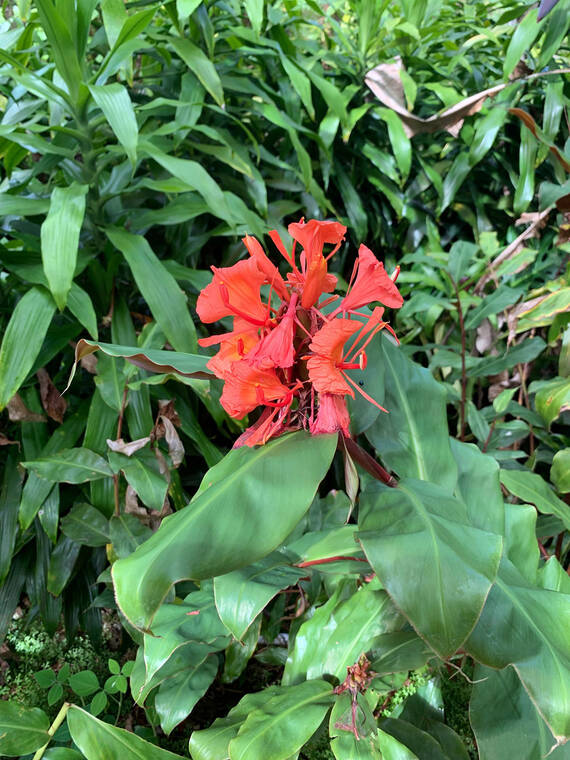Tropical Gardening: It is summer and ginger time
Long summer days stimulate flowering of many fragrant ginger species. Visitors to our islands frequently comment on how sweet our air smells with the abundance of flowers in bloom. Many ginger species may be given credit for this effect. Hawaii is blessed with a vast array, and we use them in the landscape for many reasons. These colorful flowering plants add visual beauty. They are useful for leis and flower arrangements, but an added advantage is that many are fragrant.
Moist humid tropical climates have the potential for volcanic eruptions, rot and decay so to mask unwanted odors, fragrant flowering plants are ideal. Gingers are among the easiest plants to grow for this purpose. Pharmaceutical companies have been studying the ginger family in recent years and found that many have medicinal qualities. Edible ginger or Zingiber officinale, Turmeric or olena and Cardamom are spices but were originally used as medicines and have anti oxidant properties. The ginger used in Thai cooking is galanga and we must not forget the awapuhi kuahiwi or soap ginger that early Polynesians brought to Hawaii many centuries ago.
ADVERTISING
The ginger family is noted for its many colorful and fragrant species. Gingers are related to the banana, palm and bamboo families, in that they are monocots. Many come from Malaysia, Indonesia and other parts of Southeast Asia.
There are around 50 genera and over 1,300 species in the family, the majority of which are native to tropical regions of the eastern hemisphere. More are being discovered every year. Most genera are well adapted to Hawaii’s varied climates. Many grow in the tropical zone, but some will thrive at 6,000 or more feet of elevation.
Gingers are rhizomatous perennials, generally with simple above ground stems. Flowers vary considerably, from small to very showy, and are usually borne in heads. Flowers and foliage of many species are excellent for use in floral arrangements. Gingers are relatively easy to cultivate, and once established require little care. They grow well on a wide range of soil types, as long as the soil is moist.
Handle gingers the same as bananas. They do best in moist soil high in organic matter. An application of fertilizer in early spring when growth begins, and two more applications at the same rate during the growing season will be sufficient. The fertilizer applications should be spaced 8 weeks apart. Also, compost and well rotted manures applied every 3 months will help keep the soil sufficiently rich. Planting or transplanting can be done at any season of the year. The parent clump may be divided like any rhizomatous herb. The fleshy underground rhizome may be severed at any point, as long as each piece has at least one good eye to produce a new plant.
Here are some other gingers to consider for your garden. The torch ginger, shell ginger, white ginger, yellow ginger, red ginger and Tahitian red ginger are just a few that you will find at local nurseries. The butterfly-lily, or white ginger, with its heads of white butterfly-like flowers is commonly found growing wild. The extremely fragrant flowers last but a day and are constantly being replenished by a new supply. The flowering period will last for several months. Although common in the wilds, this is still one of the best for garden fragrance and lei flowers. The yellow ginger or Hedychium flavescens from India is another fragrant specie common in wet forests and along east Hawaii roadsides.
The shell ginger with its 3- to 8-foot stalks of evergreen foliage is frequently used in sunny, drier conditions than most gingers. Its flowers, with their combination of cream, yellow, and red markings are excellent material for floral arrangements. Leaves are used to dye cloth and as a tea in Japan. Other gingers to consider are the Costus or spiral gingers. There are many species and varieties. The orange flowered Himalayan ginger, Hedychium greenii sometimes called the guava jelly ginger. It is so cold hardy that it will winter over as far north as Seattle and Victoria, British Columbia if given a little protection.





